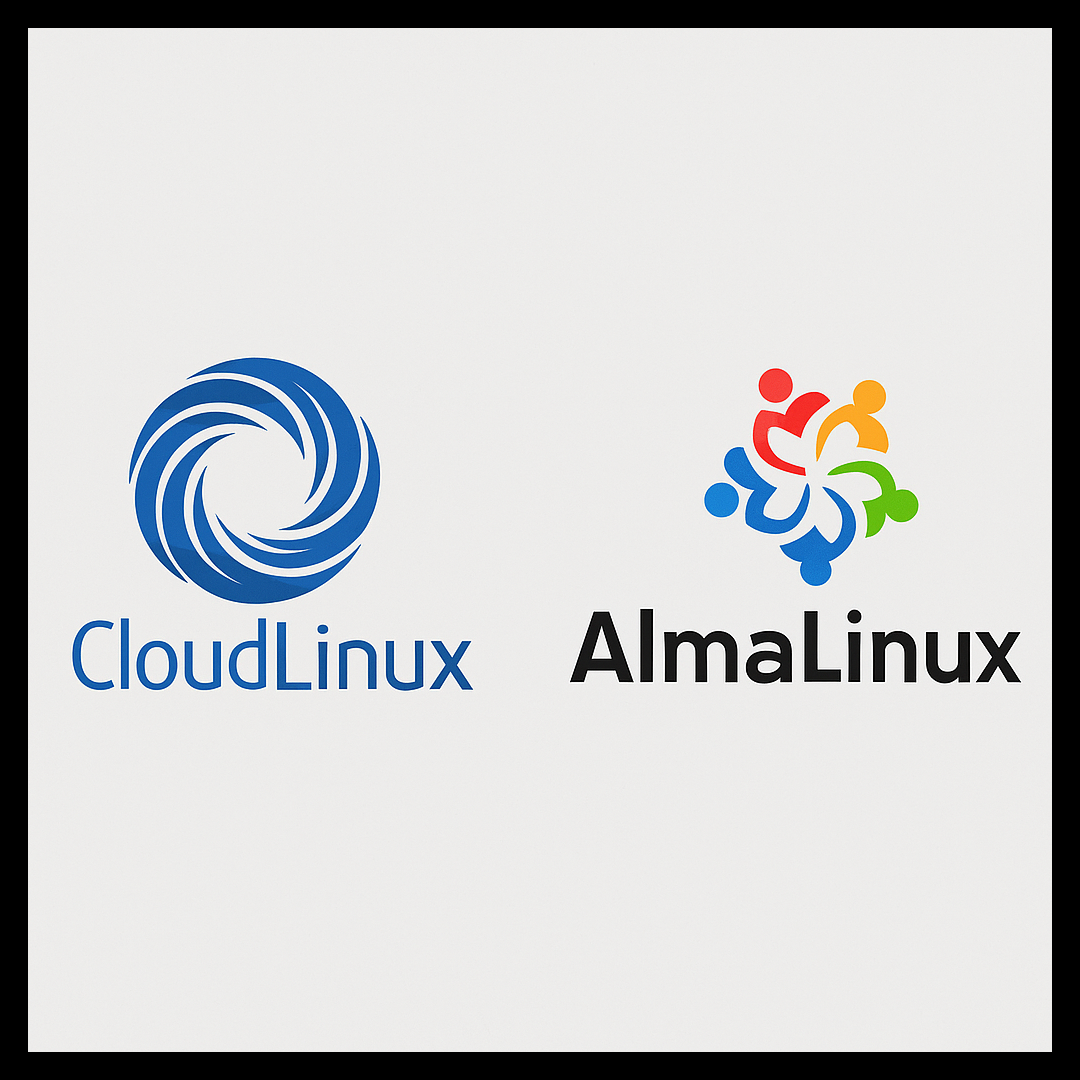When setting up a reliable hosting environment, choosing the right operating system for your server is one of the most important decisions.
Two of the most popular options today are CloudLinux and AlmaLinux—both Linux distributions designed for stability, security, and performance.
While AlmaLinux serves as a free, open-source, community-driven replacement for CentOS,
CloudLinux takes a more commercial approach, offering advanced security isolation, resource limits,
and performance optimizations tailored for hosting providers.
Understanding the differences between these two operating systems will help you decide which one aligns best with your server needs—whether you’re managing a shared hosting environment, running critical enterprise applications, or looking for maximum flexibility at minimal cost.
⚖️ CloudLinux vs AlmaLinux
💡 CloudLinux is a commercial operating system designed specifically for hosting providers and multi-tenant environments.
🔒 It adds advanced features such as CageFS (a virtualized file system that isolates each user).
⚡ Lightweight Virtual Environment (LVE) technology for setting CPU, RAM, and I/O limits per account.
🛡️ Optional integration with Imunify360 for malware protection.
✅ These features prevent one user from consuming excessive server resources or compromising the security of others.
💻 CloudLinux is particularly well-suited for cPanel/WHM servers and shared hosting businesses where isolation, performance stability, and uptime are critical.
⚠️ However, it comes with a licensing cost, which may not be ideal for budget-sensitive deployments.
💡 AlmaLinux, on the other hand, is a free, community-driven, and open-source distribution that has quickly become one of the most popular alternatives to CentOS.
📦 It offers full 1:1 binary compatibility with RHEL.
🔧 Provides enterprise-grade stability, long-term support, and frequent security updates without any licensing fees.
🚫 AlmaLinux does not include resource isolation features like CloudLinux.
✅ But it provides a solid foundation for single-tenant servers, enterprise applications, and general workloads.
💰 For businesses looking for reliability, scalability, and zero cost, AlmaLinux is an excellent choice.
Read: What is the Difference Between a Host and a Server?
Pros and Cons in Simple Terms
🌐 CloudLinux
Gives you extra control, better tenant isolation, and stronger security — but you pay for it.
🚀 AlmaLinux
Free, stable, and enterprise-ready, but lacks built-in isolation tools for shared environments.
Frequently Asked Questions (FAQ)
1. Is CloudLinux free to use?
No. CloudLinux is a paid, commercial operating system. It requires a license per server, but in return, it offers advanced features like resource isolation (LVE), user isolation (CageFS), and extra security tools that are valuable for hosting providers.
2. Is AlmaLinux free?
Yes. AlmaLinux is 100% free and open-source. It is maintained by the AlmaLinux OS Foundation and supported by the community and enterprise vendors.
3. Who should use CloudLinux?
CloudLinux is best for web hosting providers, data centers, and shared hosting servers where multiple users share the same resources. It ensures stability, prevents abuse, and strengthens server security.
4. Who should use AlmaLinux?
AlmaLinux is ideal for businesses, developers, and enterprises looking for a stable and cost-free alternative to CentOS/RHEL for their servers and applications.
5. Is AlmaLinux a replacement for CentOS?
Yes. AlmaLinux was created as a direct replacement for CentOS after CentOS shifted focus to CentOS Stream. It maintains full 1:1 binary compatibility with RHEL.
6. Can I switch from AlmaLinux to CloudLinux?
Yes. Since CloudLinux is built on CentOS/RHEL, you can convert an AlmaLinux server to CloudLinux by purchasing a license and running the provided conversion script.
7. Which one is better for cPanel/WHM servers?
For cPanel/WHM and shared hosting, CloudLinux is usually the better choice because of its isolation and security features. However, if you just need a stable OS without extra costs, AlmaLinux works well too.
8. Does CloudLinux improve server performance?
Yes. By using LVE technology, CloudLinux prevents a single user from overloading the server. This ensures stable performance for all accounts on shared hosting environments.
9. Is AlmaLinux stable for production servers?
Absolutely. AlmaLinux is enterprise-grade and stable since it’s 1:1 binary compatible with RHEL. It is widely used for production workloads, enterprise applications, and cloud servers.
10. Does CloudLinux work only with cPanel?
No. While CloudLinux is highly popular with cPanel/WHM servers, it also works with other control panels like Plesk, DirectAdmin, and ISPmanager, or even without a panel.
11. How often does AlmaLinux get updates?
AlmaLinux follows the RHEL release cycle, providing regular security patches, bug fixes, and long-term support (LTS).
12. Can I use both CloudLinux and AlmaLinux together?
Not directly. You either run CloudLinux (commercial) or AlmaLinux (free). However, since CloudLinux is based on CentOS/RHEL, you can convert an AlmaLinux server to CloudLinux if you later decide to upgrade.
13. Which OS is better for shared hosting?
CloudLinux is better for shared hosting due to resource isolation, CageFS, and enhanced security. AlmaLinux can be used, but it lacks these specialized hosting features.
14. Which OS is better for enterprise workloads?
AlmaLinux is better suited for enterprises that need a free, RHEL-compatible server OS without licensing costs. CloudLinux is more niche, focused on hosting providers.
15. What kind of support is available for CloudLinux?
CloudLinux comes with vendor support as part of the subscription, along with regular kernel updates and security fixes.
16. What kind of support is available for AlmaLinux?
AlmaLinux has community support via forums and GitHub, plus enterprise support options from vendors like TuxCare.
17. Can CloudLinux run older PHP versions securely?
Yes. CloudLinux offers HardenedPHP, allowing hosting providers to run multiple and older PHP versions securely, which is useful for legacy websites.
18. Does AlmaLinux offer security isolation like CloudLinux?
No. AlmaLinux provides standard RHEL-based security (SELinux, firewalld, etc.), but does not include per-user isolation like CageFS.
